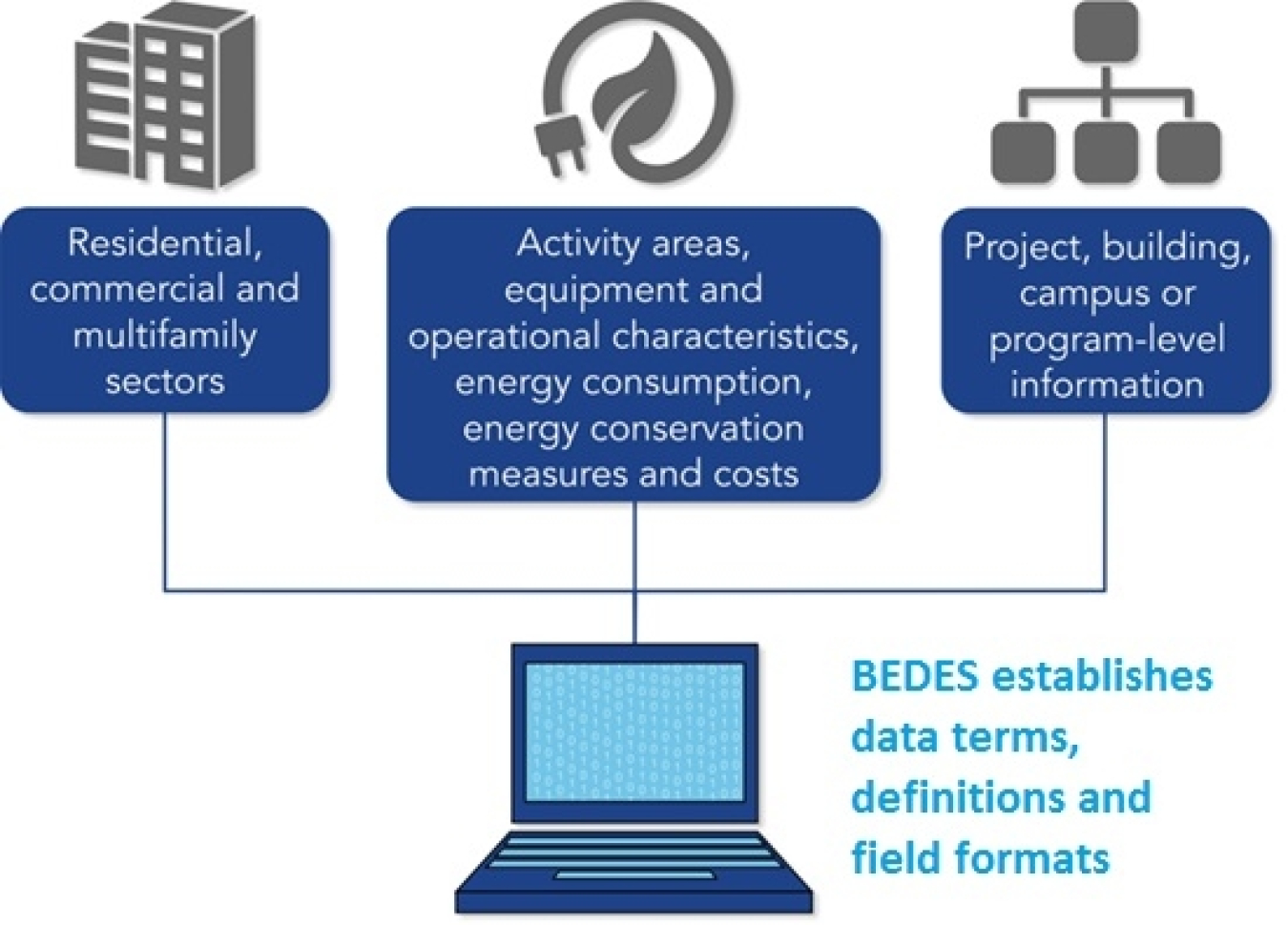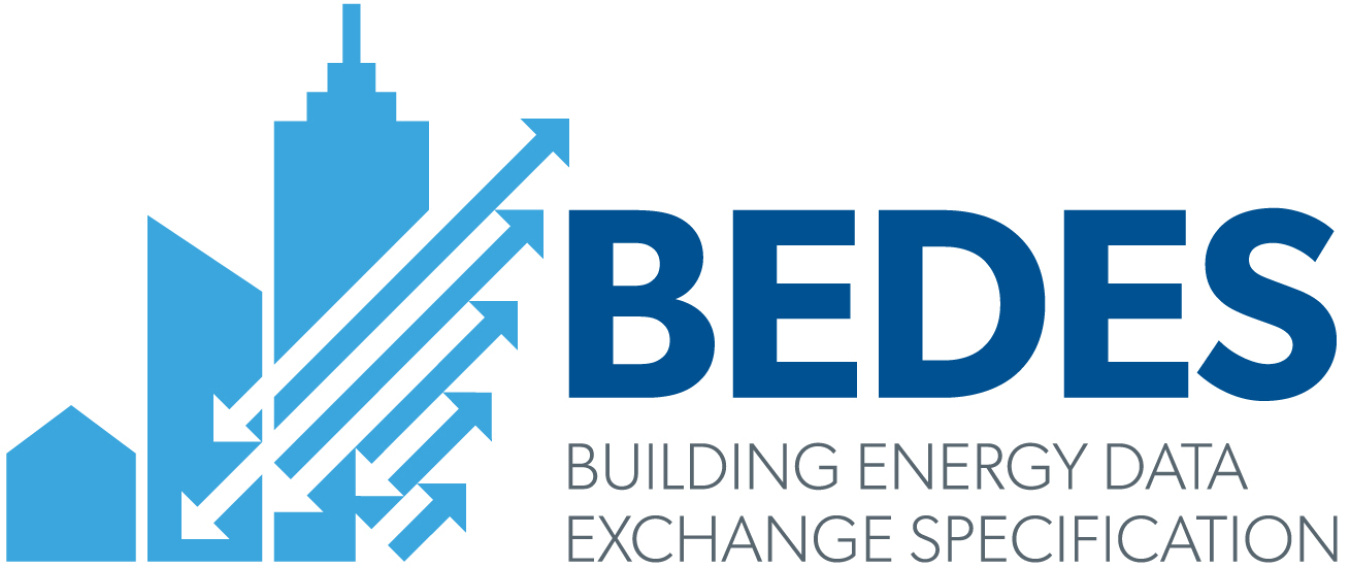
At its core, BEDES is a universal dictionary for the language of data. BEDES provides a standardized set of common terms and definitions that different repositories of building energy performance data can align to.
Imagine that you’re trying to collaborate on an important international project, one whose outcome could have profound implications for your field. Exciting, right? Now imagine that you and your colleagues each have a unique area of expertise, and only by working together can you accomplish the project’s objective. About par for the course so far? Now imagine that each of your collaborators speaks a different language, with no overlap among you. Kind of a downer, yes? Surely progress can be made on the project, but only as quickly as the language barrier can be overcome at each juncture, so that all collaborators can get on the same page.
This scenario is an oversimplification of a complex puzzle, but it demonstrates some of the difficulties that can arise when you try to combine multiple parts into a cohesive whole when all parts don’t line up evenly. And while the scenario may be simplistic, it is not as far-fetched as it seems. This kind of impediment may no longer prove much a barrier for spoken languages, but there is a linguistic area for which the translation issues remains ever-present: the complex and multifaceted language of data.
Like many other domains, the amount of data available on buildings and building performance has been increasing rapidly over the past few years -- a result of both increasing demand for this information and public policies. Ostensibly this data should be a boon to decision makers, enabling them to answer some very important questions:
- How does the efficiency of building here compare to those in other jurisdictions?
- What impacts has the introduction of certain building technologies had on the efficiency and price of available residential and commercial spaces?
- Relative to areas with no regulation, are buildings more efficient in places where building energy codes or efficiency standards exist?
Unfortunately, the everyday application of building performance data to answer these and other questions has been hampered by the fact that the necessary data are spread across disparate sources and exist in many different formats. One group may have all the data for a subset of buildings (stored in Format A), a second group may have some data on all buildings (stored in Format B), and a third group may have all data for all buildings, but only within a specific geographic area (and stored in Format C, of course). The value to be unlocked by combining these data together are myriad and potentially transformative, but the effort required to do so can be a significant obstacle: formatting, cleaning, and compiling disparate data into a single usable dataset can be a gargantuan undertaking. However, only after this work is completed can the combined dataset be analyzed and mined for key insights into the unknown.
BEDES to the Rescue
Enter the Building Energy Data Exchange Specification, or BEDES for short (pronounced ‘beads”), which the U.S. Department of Energy (DOE) and Lawrence Berkeley National Laboratory (LBNL) developed to overcome a key barrier preventing the exchange and integration of building performance information: the time and expense involved in sharing data.
At its core, BEDES is a universal dictionary for the language of data. It is not a data format itself, but rather a reference point for other data formats. BEDES provides a standardized set of common terms and definitions that different repositories of building energy performance data can align to. ‘Mapping’ two datasets to the BEDES specification creates a bridge between them, enabling them to more quickly and easily compare, combine, or exchange information. As more applications adopt BEDES, more bridges are created, increasing the number of market actors able to share and exchange data with relatively low transaction costs. The end result is clear: with more bridges in the mix, new opportunities open up for ‘big data’ solutions to be examined and pursued, increasing both the amount and richness of information available to support decision making throughout the building energy performance space.
When it comes to data, BEDES is a potential game changer.
BEDES in the Field
The DOE has committed to using BEDES for all relevant programs in order to make its tools interoperable, reduce reporting burdens, and to make it possible to exchange datasets among tools and databases. DOE’s Building Performance Database (BPD) and Standard Energy Efficiency Data Platform (SEED) are all already compliant with BEDES, while several initiatives outside of DOE – including ENERGY STAR Portfolio Manager and the Building Performance Institute’s (BPI) Home Performance XML (HPXML) standard – have also mapped to BEDES’ terms and definitions. Other prominent data standards are in the process of establishing compliance or have plans to do so in the near future.
BEDES is building bridges, and the bottom line of all this activity is clear: better informed decision-making.
BEDES Tomorrow
Just as new technologies and applications are generating new types of building performance data, so too is BEDES evolving and expanding to follow suit. Under the direction of DOE’s BEDES Team and the BEDES Working Group, BEDES is continually growing and improving, working to ensure that it remains a relevant and valuable tool as the building industry evolves. Here is what some users are saying:
“BEDES is important to our objective of delivering exceptional service and solutions that enhance the value of every property and the lifestyle of every resident in the communities we manage. By adopting these data standards and encouraging the ecosystem of service providers we work with to adopt these standards reduces the overhead of communicating building energy information enabling greater delivery and adoption of energy efficiency solutions."
-- Aaron Mehta, Director of Energy Information
FS Energy
“Basing our AIA 2030 Design Data Exchange (DDx) on BEDES is all about the future. As the DDx—and our program—grows, BEDES will allow us to import external data with ease and link up with other databases for enhanced collaboration and efficiency.”
-- Melissa Wackerle, Director of Sustainable Practice & Knowledge
The American Institute of Architects
“BEDES is positioned to become the supporting pillar for the bridge connecting high performance construction information and the professional real estate community. High performance data is often technical in nature and the BEDES/RESO collaboration seeks to translate that information into useful data in support of home sales and valuation.”
-- Rob Larson, Chief Information Officer
California Regional MLS
"The collaborative efforts of the BEDES working groups have connected organizations developing new technology platforms in a collaborative environment that enables sharing of key concepts and processes needed for feasible energy efficiency program development. We find the specifications created in the BEDES program important to enabling ease of data collection and to providing a pathway to link various data platforms."
-- Avery Kintner
EcoPros
BEDES Version 1.2 Released
This month, DOE released BEDES version 1.2, and the Interactive, searchable dictionary is available online. Recent changes in Version 1.2 include: new terms and enumerations; updates and corrections to existing fields, and deletions of redundant or obsolete terms. Those interested in getting involved and contributing to the ongoing development of BEDES can join the BEDES Working Group.
Stakeholders can also join the BEDES team on October 22, 2015 to hear about the latest developments and opportunities to support standardization and interoperability in the building efficiency market, meet some of the early adopters, and learn how you can use or contribute to the BEDES dictionary.


